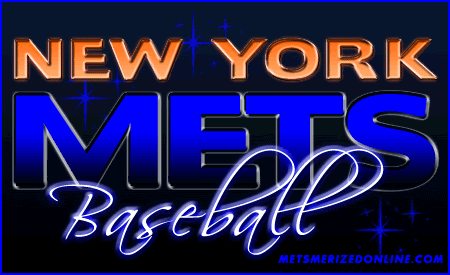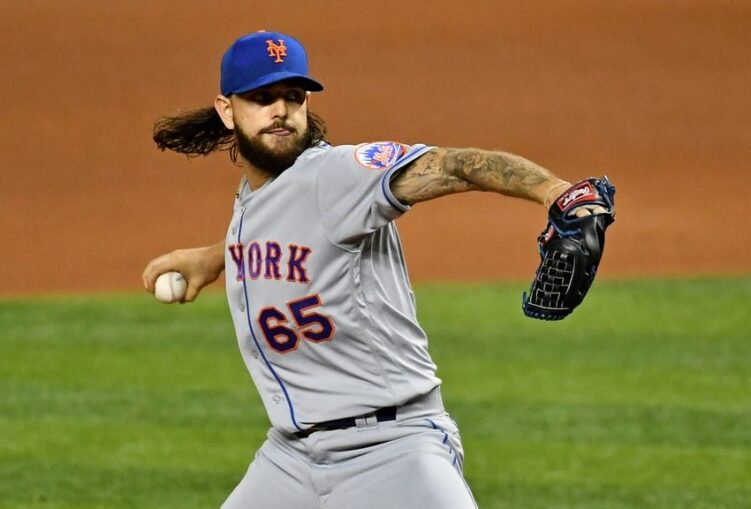
Following one of the most active offseasons in recent years for the New York Mets, Opening Day is almost here. Thankfully, that means meaningful baseball is set to return to Queens shortly as New York attempts to qualify for the playoffs for the first time since 2016.
With spring training wrapping up, these last few remaining games have served as one final test for players still looking to break camp in the big leagues. With relievers Drew Smith and Seth Lugo unavailable, there was still one bullpen spot up for grabs until Sunday night.
As currently constructed, New York’s bullpen is slated to feature Edwin Diaz, Trevor May, Jeurys Familia, Miguel Castro, Dellin Betances, Aaron Loup, and Jacob Barnes. Earlier on Sunday, Jerry Blevins and Arodys Vizcaino were informed they didn’t make the Opening Day roster, along with Stephen Tarpley. That had seemingly left Robert Gsellman and Mike Montgomery to battle for the last spot, but with the veteran lefty getting released after Sunday’s loss, Gsellman was then told he earned a trip to Washington for New York’s season-opening series against the Nationals on Thursday.
Gsellman’s path to making the Opening Day roster was likely the most challenging of all, especially since he’s coming off the worst statistical performance of his career. Even though the shortened season and COVID-19 protocols made it difficult for any player to enjoy success in 2020, the coaching staff couldn’t overlook those factors anymore once the 27-year-old became a major liability every time he stepped onto the mound.
Over his six appearances, the right-hander compiled 14.0 innings, producing a miserable 9.64 ERA, 8.76 xERA, 7.55 FIP, 6.45 xFIP, 2.14 WHIP, .355 AVG, .367 BABIP, 12.7% strikeout rate, 16.4% whiff rate, 11.3% walk rate, 22.6% line-drive rate, 41.5% ground-ball rate, 35.8% fly-ball rate, 21.1% HR/FB rate, 11.3% barrel rate, 49.1% hard-hit rate and a -0.3 fWAR.
In comparison, the former 13th-round selection worked 63.2 innings in 2019, generating a 4.66 ERA, 3.72 xERA, 4.13 FIP, 4.66 xFIP, 1.37 WHIP, .258 AVG, .315 BABIP, 21.7% strikeout rate, 26.1% whiff rate, 8.3% walk rate, 21.6% line-drive rate, 44.3% ground-ball rate, 34.1% fly-ball rate, 11.1% HR/FB rate, 2.7% barrel rate, 30.9% hard-hit rate and a 0.4 fWAR.
While his poor 2020 results were likely impacted by a pair of injuries (tricep tightness and a fractured rib), not to mention the two different versions of spring training and also being inserted into the starting rotation out of necessity, his performance this spring has been unspectacular.
In four appearances, the 6′ 4″ hurler has compiled eight innings, allowing 14 hits, five earned runs, two walks, two home runs, and has only struck out four hitters. To make matters worse, just barely half of the pitches he’s thrown have been located in the strike zone, which was a major problem for him throughout last season.
After recording a 58.3% first-pitch strike rate in 2019, Gsellman saw that percentage decrease by 6.2% during the following season, forcing his walk totals to increase dramatically. In addition, only 43.2% (4.4% decrease from 2019) of his pitches were located in the zone during the 2020 campaign, making it easy for hitters to stay disciplined in the batter’s box when facing him.
In particular, the Westchester HS product endured the majority of his command issues with a mid-90s sinker — his primary offering — as its strike rate decreased from 51.6% in 2019 to just 40.8% in 2020, proving to be a serious issue that must be corrected.

Source: BaseballSavant.com
Considering Gsellman has utilized his sinker almost 50% of the time since breaking into the majors in 2016, there’s a strong chance he won’t spend much time in the big leagues this season if his sinking fastball isn’t located in the zone more effectively. If the California native can accomplish that feat, then his chances of setting up the rest of his repertoire, particularly a high-80s slider, should improve significantly. As a result, he likely wouldn’t surrender nearly as much contact and could generate plenty more swings and misses, helping him keep runners off the base paths.
Considering “G-Man” still has two minor-league options remaining, New York could easily keep him within the organization if his early-season performance continues to underwhelm. Since Gsellman will be eligible for his final year of arbitration next winter and is only two season away from free agency, this year will be one of the biggest of his career and he could ultimately become a non-tender candidate if his results don’t improve in 2021.
















